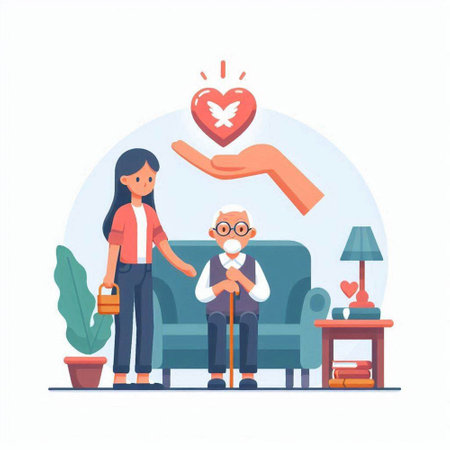Understanding Fire and Emergency Risks in UK Homes
When it comes to safeguarding your family, understanding the unique fire and emergency risks present in UK homes is a vital first step. British households encounter a range of hazards that can quickly escalate into emergencies if left unaddressed. According to data from the Home Office, there were over 27,000 dwelling fires attended by fire and rescue services across England in the year ending March 2023, with cooking appliances being the leading cause. Electrical faults, unattended candles, overloaded sockets, and faulty white goods such as tumble dryers also account for a significant proportion of domestic incidents. Regionally, older housing stock in areas such as London and the North West poses additional risks due to outdated wiring and lack of modern fire safety features. In rural parts of Scotland and Wales, response times may be longer, making early detection and prevention even more critical. Beyond fire, British families must also be vigilant against carbon monoxide poisoning—especially during colder months when gas boilers and heaters are used more frequently—and accidental injuries caused by slips, trips, or falls. By recognising these region-specific dangers and staying informed about local statistics, parents can make better decisions to keep their loved ones safe at home.
Essential Home Fire Safety Equipment for UK Households
When it comes to protecting your family and property from house fires and other domestic emergencies, equipping your home with the right safety tools is crucial. For British households, a combination of smoke alarms, fire blankets, and extinguishers forms the foundation of effective fire safety. Below, we evaluate these must-have products, offering practical tips on what to look for when making your selections.
Smoke Alarms: Your First Line of Defence
In the UK, its a legal requirement for all rented homes to have working smoke alarms on each storey. However, every household—owned or rented—should ensure they are adequately covered. Opt for alarms that comply with British Standard BS EN 14604. Consider combining optical (for smouldering fires) and ionisation (for fast-flaming fires) alarms for comprehensive protection. For added convenience and reliability, look for models with a 10-year sealed battery and interlinking capability so all alarms sound if one detects smoke.
Types of Smoke Alarms at a Glance
| Type | Best For | Key Feature |
|---|---|---|
| Optical | Living rooms, hallways | Better at detecting slow-burning fires |
| Ionisation | Kitchens (with caution), stairwells | Quicker response to fast flames |
| Combined/Interlinked | Larger homes, multi-storey properties | All alarms sound together |
Fire Blankets: Essential for Kitchens
A fire blanket is a simple yet highly effective tool for dealing with small pan or chip pan fires—a common risk in UK kitchens. Always choose blankets that meet BS EN 1869 standards and ensure they are large enough (typically 1m x 1m or bigger) to cover adult-sized flames. Install them in an accessible location near the kitchen exit, not directly above the hob where reaching could be dangerous during an emergency.
Fire Extinguishers: Selecting the Right Type
Not all fire extinguishers are suitable for home use; some may even worsen certain types of fires. For typical British households, a 1kg or 2kg dry powder extinguisher covers most risks (Class A, B, and C fires). However, a small water mist extinguisher is increasingly popular due to its versatility and clean-up ease. Always check that your extinguisher meets BS EN3 standards and remember to have it serviced according to the manufacturer’s instructions.
Quick Reference: Fire Extinguishers for Home Use
| Type | Suitable For |
|---|---|
| Dry Powder | Papers, textiles, electrical equipment |
| Water Mist | Papers, textiles, cooking oils/fats* |
*Always read manufacturer guidance regarding suitability for oil/fat fires.
Shopping Tips for UK Parents
- Check for the British Standard Kitemark when buying any safety device.
- If unsure about installation or maintenance, consult your local Fire & Rescue Service—they often provide free home safety visits.
- Test all alarms monthly and replace batteries as recommended by the manufacturer.
By investing in high-quality fire safety equipment tailored to UK standards and following best practice guidelines, you’ll significantly improve your home’s preparedness for emergencies—offering peace of mind to you and your loved ones.

3. Creating an Effective Family Fire Escape Plan
When it comes to home safety, having a well-rehearsed fire escape plan is non-negotiable for UK families. The structure of British homes, especially terraced and semi-detached houses, means each household must tailor their plan accordingly. Below is a step-by-step guide to help you formulate a practical fire escape strategy that works for your family.
Step 1: Map Out Your Home
Start by drawing a simple floor plan of your property, noting all possible exits—including front and back doors, windows, and alternative routes if the main path is blocked. For terraced and semi-detached homes, take extra care to highlight shared walls, limited exit points, and any alleyways or garden gates that could serve as emergency routes.
Step 2: Assign Roles and Responsibilities
Every family member should know what to do in the event of a fire. Assign adults or older children the task of helping younger siblings or anyone who may need assistance. Practise opening locks and windows together so everyone is confident they can operate them under pressure. For families with pets, decide who will be responsible for their evacuation.
Step 3: Choose Safe Meeting Points
Select a safe meeting point outside your home where everyone should gather after escaping—this could be the end of your driveway, a neighbour’s front gate, or a lamp post across the street. Make sure it’s far enough from the building to avoid smoke or falling debris but close enough for young children to reach quickly.
Special Considerations for Terraced and Semi-Detached Homes
Because many UK homes share walls with neighbours, discuss secondary escape routes such as exiting through a rear garden or via adjoining properties if necessary (with prior neighbour agreement). Make sure everyone knows not to re-enter the house once outside, no matter what belongings have been left behind.
Practice Makes Perfect
Regularly rehearse your fire escape plan at different times of day—especially at night when it’s harder to see. Encourage children to practise crawling low under smoke and feeling doors for heat before opening them. Reviewing these steps every few months ensures that, in an emergency, every family member reacts instinctively and safely.
4. Child Safety Tips: Teaching and Practising Emergency Drills
Ensuring your children understand what to do in a fire or domestic emergency is a cornerstone of home safety for UK parents. Its essential to introduce fire safety and emergency procedures in an age-appropriate manner, using clear, calm instructions and regular practice. This not only helps children feel prepared but can also reduce panic if an emergency arises.
Age-Appropriate Fire Safety Education
Tailoring your approach based on your child’s age is key. Young children need simple messages and repetition, while older kids can handle more detail and responsibility. Here’s a quick guide:
| Age Group | Key Messages & Activities |
|---|---|
| Under 5s | – Recognise the sound of smoke alarms – “Stop, Drop, and Roll” basics – Practice crawling low under smoke – Identify safe meeting points with pictures or drawings |
| 5–11 years | – Learn escape routes from each room – Role-play dialling 999 (without calling) – Practice unlocking doors and windows – Reinforce “never hide, go outside” |
| 12+ years | – Discuss fire hazards and prevention – Assign roles in family drills – Teach how to check closed doors for heat – Involve them in planning evacuation routes |
Setting Up Regular Family Emergency Drills
Practising what to do during a fire or emergency makes everyone more confident. Aim to run a drill every three months, or at least twice a year. Keep it positive—present drills as a family game rather than something scary.
How to Run Effective Home Drills
- Choose different times of day for each drill so children don’t associate emergencies with just one routine.
- Start with a smoke alarm test—let children hear the alarm so they recognise it instantly.
- Time your escape together and aim to improve speed without rushing dangerously.
- After each drill, discuss what went well and where you could improve.
Top Tips for UK Families
- Keep all exits clear of clutter at all times—especially shoes and coats near the front door.
- If you live in a flat, practise using the correct communal escape routes and never use lifts during a fire drill.
- Use age-appropriate language: avoid alarming details for younger children, but be honest about the importance of drills.
By teaching and practising regularly within the family setting, you’ll empower your children with life-saving knowledge while reinforcing a sense of security at home.
5. Electrical and Heating Safety: Preventing Everyday Hazards
When it comes to protecting your family in the UK, understanding the unique challenges posed by British homes is key. Many UK properties, especially period homes, feature older wiring and insulation that may not meet modern safety standards. To help prevent electrical fires, always ensure your home’s wiring has been checked by a qualified electrician—this is particularly important if you’re living in or moving into an older property. Avoid overloading sockets with multiple extension leads; instead, use surge-protected adaptors and never daisy-chain them together.
Safe Use of Plugs and Sockets
British plugs are designed with safety features like fuses, but misuse can still lead to accidents. Always insert plugs fully into sockets, and never force a plug if it doesn’t fit easily. Regularly inspect cables for fraying or damage—replace any that look worn. For families with small children, consider using socket covers or investing in modern childproof sockets to prevent little fingers from exploring where they shouldn’t.
Heating Appliances and Portable Heaters
During colder months, many households rely on portable heaters or electric blankets. Only use heaters that carry the British Standard Kitemark and ensure they’re positioned well away from curtains, furniture, and bedding. Never leave heaters running unattended or overnight, and keep them out of reach of pets and children. When using electric blankets, follow manufacturer instructions carefully, check for signs of wear each winter, and don’t fold or crease them when storing.
Adapting to UK Weather Conditions
The UK’s damp climate can increase the risk of electrical faults due to condensation or leaks—especially in cellars, lofts, or conservatories. Ensure these areas are well ventilated and dry; if you spot any signs of water ingress near electrical fixtures, have them checked immediately by a professional.
Tips for Older Properties
If you live in a Victorian terrace or another character property, be mindful that original wiring may not support today’s power demands. Arrange periodic electrical inspections (ideally every 5–10 years), replace old fuse boxes with modern consumer units, and consider upgrading insulation around exposed pipes and wires to reduce fire risks.
Quick Safety Checklist for Parents
- Test smoke alarms monthly and replace batteries as needed
- Teach children not to play with plugs or sockets
- Keep portable heaters at least one metre away from anything flammable
By following these tailored tips for British homes, you’ll significantly reduce everyday risks and help keep your family safe from preventable emergencies.
6. Shopping Recommendations: Reliable Home Safety Products Available in the UK
When it comes to safeguarding your home and family from fires and domestic emergencies, investing in reputable safety products is a must. Here are some curated shopping suggestions featuring trusted brands and practical emergency kits that can be found easily across the UK.
Smoke Alarms and Carbon Monoxide Detectors
Top-rated brands such as Kidde, FireAngel, and First Alert offer reliable smoke alarms and carbon monoxide detectors, essential for every UK household. Look for models with British Standard certifications (BS EN 14604 for smoke alarms, BS EN 50291 for CO detectors) to ensure they meet local safety requirements. Many supermarkets, hardware stores like B&Q, and online retailers such as Amazon UK and Argos stock these devices.
Fire Extinguishers and Fire Blankets
Every kitchen should be equipped with a certified fire extinguisher—consider the Firechief ABC Powder Extinguisher, suitable for multiple types of fires. For quick responses to pan fires, a fire blanket from trusted suppliers like Homesafe or Kidde is ideal. Both items are widely available at high street chains like Screwfix, Homebase, and specialist safety shops.
Emergency Escape Ladders and Torches
If you live in a multi-storey house or flat, an emergency escape ladder (such as those by Kidde) is a smart investment. Pair this with battery-powered or wind-up torches—Energizer and Dorcy produce durable models—to ensure safe evacuation during power cuts. These products can be purchased online at retailers including Currys, Aldi Specialbuys, and Tesco Direct.
First Aid Kits and Emergency Supplies
A comprehensive first aid kit is vital. The St John Ambulance Family First Aid Kit is specifically designed for households with children, containing supplies for common injuries and emergencies. Ready-made emergency kits are available from brands like Solis Safe Home. Most pharmacies (Boots, Lloyds Pharmacy) and online platforms offer these kits for home delivery or click-and-collect services.
Where to Buy: Practical Tips for UK Parents
- Local Supermarkets: Sainsbury’s, Morrisons, and Tesco often have basic safety products in their homeware sections.
- DIY Stores: B&Q, Screwfix, Wickes – great for extinguishers, alarms, and escape ladders.
- Online Retailers: Amazon UK, Argos, John Lewis – convenient options with user reviews to guide your choices.
Shopping Tip:
If you’re unsure about installation or the right model for your home layout, many stores offer expert advice in person or online chat support. Prioritise products carrying British Standards certification marks for peace of mind.
Selecting trusted brands and purchasing from reputable UK suppliers ensures that your emergency equipment will perform when needed most—making all the difference in a crisis.
7. Useful UK Emergency Contacts and Resources
When preparing for house fires and domestic emergencies, knowing who to contact can make all the difference. Below is a handy list of essential helplines, local authority resources, and trusted organisations that provide further support and advice specifically tailored for UK residents. Keep these details accessible in your home or on your phone for peace of mind.
Emergency Services
999 – Immediate Emergencies
For fire, police, ambulance, or coastguard emergencies, dial 999 immediately. This number connects you to all main emergency services across the UK.
112 – European Emergency Number
112 also connects you to emergency services and works throughout the EU as well as the UK—useful if travelling.
Non-Emergency Support
101 – Non-Urgent Police Enquiries
If you need police assistance but it’s not an emergency, call 101. This covers situations such as reporting minor accidents or suspected criminal activity without immediate danger.
111 – NHS Medical Advice
The NHS 111 service provides fast medical advice for non-life-threatening health issues. It’s available 24/7 by phone or online chat.
Fire Safety and Prevention Advice
Your Local Fire & Rescue Service
Your local fire brigade offers free home fire safety checks and advice tailored to your household’s needs. Visit their official website or search “home fire safety visit” plus your area name for booking details.
The Fire Kills Campaign
This government initiative shares practical fire prevention tips for families. Access resources at gov.uk/firekills.
Domestic Abuse and Vulnerable Persons Support
National Domestic Abuse Helpline – 0808 2000 247
This free helpline, run by Refuge, provides confidential support for anyone experiencing domestic abuse in the UK.
The Children’s Society – Family Support
This charity helps families in crisis and offers safeguarding resources for parents: childrenssociety.org.uk
Council and Local Authority Resources
Your local council website will have up-to-date information about emergency accommodation, social care support, and community resilience planning. Search “[your borough/county] council emergency services” for direct links.
Additional Trusted Organisations
- The British Red Cross: Practical advice and emergency relief: redcross.org.uk
- Citizens Advice: Guidance on housing rights after emergencies: citizensadvice.org.uk
By familiarising yourself with these contacts and making them easily accessible, you’ll be better prepared to respond quickly and confidently during a house fire or any domestic emergency.


